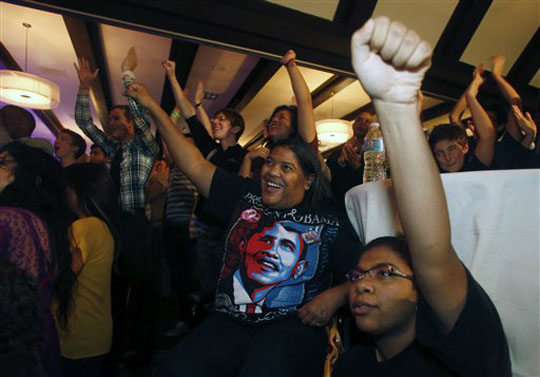The role of Race, Gender, Age and Education In The U.S. Elections

NEW DELHI: In the final week leading up to the November 7 United States Presidential elections, polls indicate that Democrat candidate Hillary Clinton seems to have secured a small lead. What’s equally interesting in the polling data is that when it comes to analysing voting behaviour, gender and race are perhaps the key determinants.
For instance, men and whites tend to back Republicans whereas women and ethnic minorities are rallying behind Democrats.
In 2012, 56 percent of white voters backed Mitt Romney whereas 90 percent of nonwhite voters and 95 percent of black voters threw their weight behind Barack Obama. In 2016, the non white vote is - again - overwhelmingly behind the Democrat candidate, with only 17 percent Hispanics and 3 percent Black voters backing Trump.
This is significant in how voting will play out, as Hispanics account for more than a fifth of the population in four key swing states, including that of Florida. Similarly, in Georgia and North Carolina, the demographic of large Black communities will work against Trump.
Gender is another key factor this year, in fact more so than in 2012 when 53 percent of men backed Romney and 57 percent of women supported Obama. This year, the woman vote has driven even more toward Clinton, which is perhaps not surprising given the range of sexual harassment allegations against Trump as well as comments describing women as “dogs” and “slobs.”
Further, age still matters in this election, with the Republicans gunning after the over-50 age demographic. In 2012, a majority of over 50 voters backed Romney whereas Obama got over 60 percent of voters under the age of 30.
In 2016, the older the voter, the more likely they are to back Trump, with 49 per cent of over-65s supporting him, compared to 29 per cent of 18 to 39-year-olds.
This matters because older voters tend to come out to the polls in larger proportional numbers on voting day, meaning Clinton will have to drive younger voters to get out and cast their vote. To put this in perspective, whilst Florida’s high Hispanic population is in favour of Clinton, its high over-65 age demographic is a plus for Trump.
College education is another determinant, with the data showing that the level of education of voters in inversely correlated to support for Trump. A number of Republican college graduates have switched over to Clinton, with Trump seeing an unprecedented lack of support amongst the college educated voter.
However, amongst those that are high school graduates or have a lower level of education, Trump has the backing of 44 percent compared to Clinton’s 36 percent -- giving him a clear edge amongst this demographic. This is particularly relevant to the swing states of Georgia and Nevada that have high proportions of people who have failed to graduate high school or go on to college.
Linked to this is also the case of unemployment, with Trump appealing to the unemployed voter through statements on preventing the outsourcing of American jobs. Unemployment is high in several of the swing states, namely Nevada, Arizona, North Carolina and Florida.



